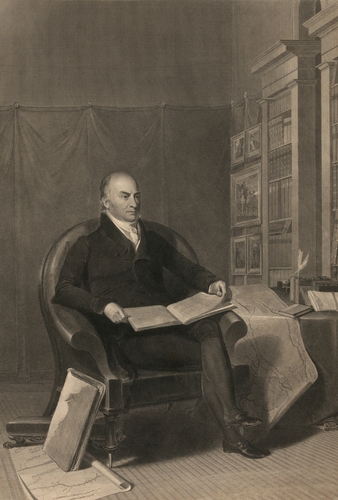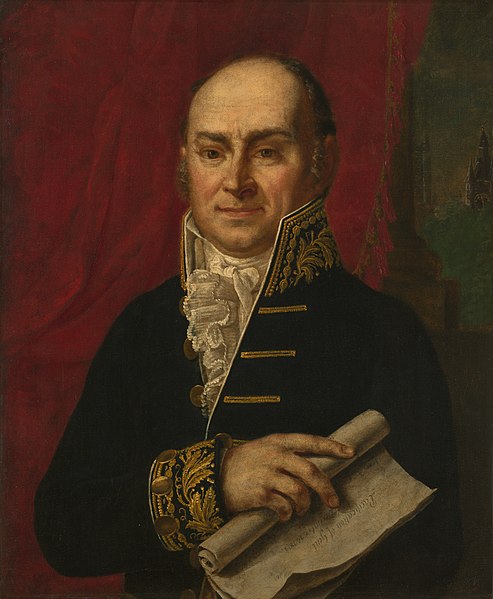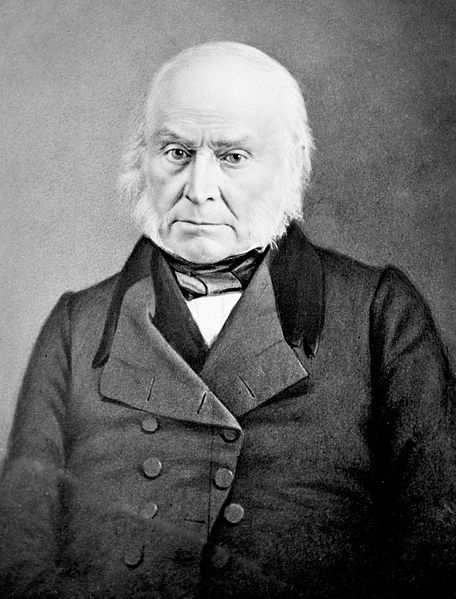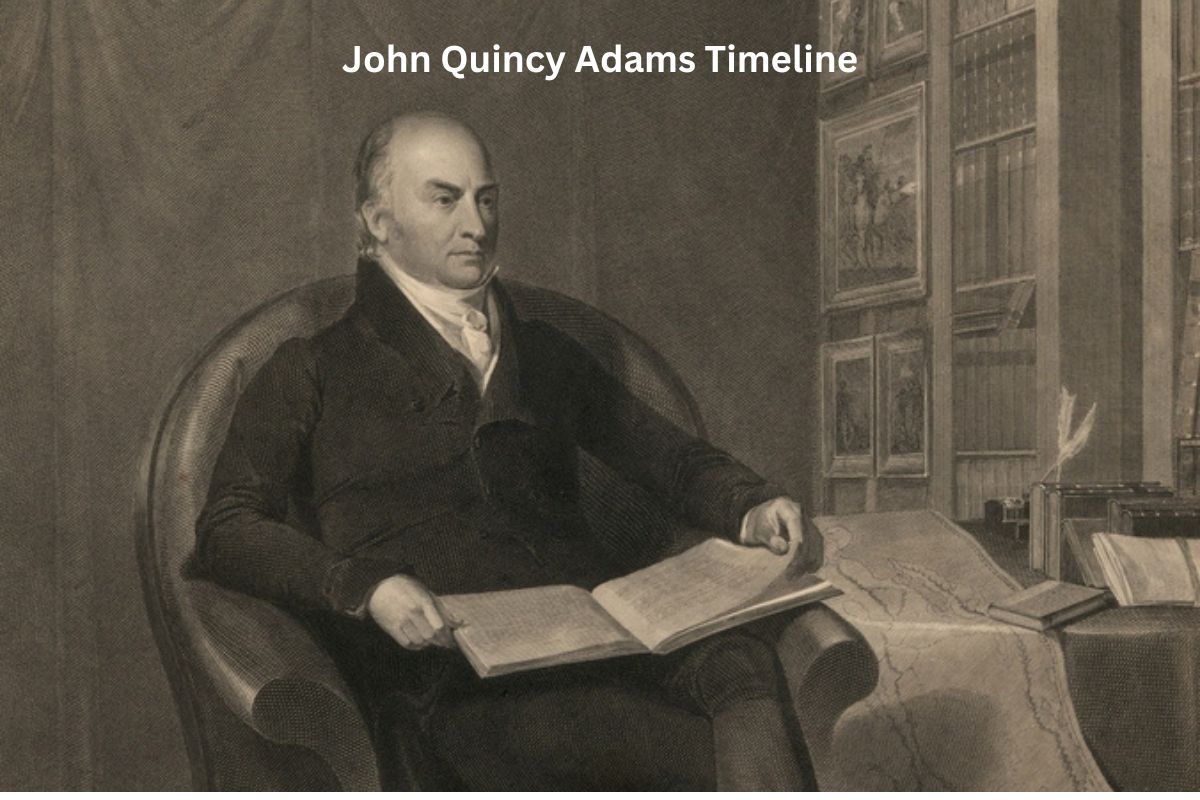John Quincy Adams, the sixth President of the United States, was born into a family deeply rooted in American history.
He played pivotal roles in diplomacy, politics, and governance throughout his illustrious career.
From his early experiences in European diplomacy to serving as Secretary of State and President, and finally, his influential role in the U.S. House of Representatives, Adams left an enduring legacy of dedication to the principles of liberty, justice, and international diplomacy.
This brief introduction provides a glimpse into the remarkable life and contributions of John Quincy Adams.
| Year | Event |
|---|---|
| 1767 | John Quincy Adams is born in Braintree, Massachusetts (now Quincy, Massachusetts), to John Adams and Abigail Adams. |
| 1777 | Accompanies his father, John Adams, to France during the American Revolution. |
| 1781 | Serves as secretary to Francis Dana, the U.S. envoy to Russia. |
| 1785 | Studies law at Harvard University. |
| 1787 | Becomes a lawyer and starts legal practice in Boston. |
| 1794 | Marries Louisa Catherine Johnson. |
| 1797 | Appointed as the U.S. Minister to the Netherlands. |
| 1797-1801 | Serves as the U.S. Minister to Prussia. |
| 1803 | Becomes a U.S. Senator from Massachusetts. |
| 1809-1814 | Serves as the U.S. Minister to Russia. |
| 1815-1817 | Serves as the U.S. Minister to Great Britain. |
| 1817 | Appointed as the U.S. Secretary of State by President James Monroe. |
| 1824 | Elected as the sixth President of the United States. |
| 1828 | Loses re-election bid to Andrew Jackson. |
| 1830 | Elected to the U.S. House of Representatives from Massachusetts. |
| 1848 | Collapses and dies in the U.S. Capitol Building on February 23, 1848. |
Timeline of John Quincy Adams
1767: John Quincy Adams is born in Braintree, Massachusetts (now Quincy, Massachusetts)
John Quincy Adams was born on July 11, 1767, in Braintree, Massachusetts, which is now part of Quincy, Massachusetts. He was the eldest son of John Adams, who would later become the second President of the United States, and Abigail Adams.
Also Read: Facts About John Quincy Adams
His birthplace was significant because it was a time when the American colonies were still under British rule, and his family played a crucial role in the American Revolution and the founding of the United States.

1777: Accompanies his father, John Adams, to France during the American Revolution
In 1777, at the age of 10, John Quincy Adams embarked on a significant journey when he accompanied his father, John Adams, to France. John Adams was sent to France as a diplomat during the American Revolutionary War to secure French support for the American cause.
Young John Quincy’s exposure to the world of diplomacy and international affairs at such a young age had a profound influence on his future career in diplomacy and politics.
1781: Serves as secretary to Francis Dana, the U.S. envoy to Russia
In 1781, at the age of 14, John Quincy Adams began working as a private secretary to Francis Dana, the U.S. envoy to Russia.
This experience allowed him to gain a firsthand understanding of diplomatic negotiations and international relations. It was an early step in his long and distinguished career in public service and diplomacy.
Also Read: Accomplishments of John Quincy Adams
It’s worth noting that Adams’ diplomatic roles in his youth laid the groundwork for his later service as a U.S. Minister to several European countries and as the U.S. Secretary of State.
1785: Studies law at Harvard University
After his experiences as a secretary and diplomat, John Quincy Adams enrolled at Harvard University in 1785. He pursued a rigorous education in law, philosophy, and other subjects.
This formal education provided him with a strong intellectual foundation and legal training, which would prove valuable throughout his career as a lawyer and statesman.
Adams was known for his exceptional intellect and his commitment to education, qualities that would serve him well in his future endeavors.

1787: Becomes a lawyer and starts a legal practice in Boston
In 1787, after completing his studies at Harvard, John Quincy Adams was admitted to the bar and became a practicing lawyer in Boston.
He embarked on his legal career, where he developed a reputation for his keen legal mind and dedication to justice.
His legal practice encompassed various cases, including those related to maritime law, which was significant in Boston due to its bustling port.
Adams’ legal career marked the beginning of his involvement in public affairs and the legal profession, setting the stage for his later roles in government and diplomacy.
1794: Marries Louisa Catherine Johnson
On July 26, 1797, John Quincy Adams married Louisa Catherine Johnson, an Englishwoman of American descent. Louisa Catherine came from a well-connected and influential family. Their marriage was a significant personal event in Adams’ life.
Together, they would have four children: George Washington Adams, John Adams II, Charles Francis Adams, and Louisa Catherine Adams.
Louisa Catherine Adams would play an important role as the First Lady when John Quincy Adams became the sixth President of the United States in 1824.
1797: Appointed as the U.S. Minister to the Netherlands
In 1797, John Quincy Adams was appointed as the United States Minister to the Netherlands by President John Adams, his father.
As the U.S. Minister to the Netherlands, he played a vital role in negotiating loans to support the American war effort and in diplomatic relations with the Dutch Republic.
This appointment marked his entry into the world of international diplomacy, a career path he would continue to pursue throughout his life.

1797-1801: Serves as the U.S. Minister to Prussia
Following his diplomatic assignment in the Netherlands, John Quincy Adams was appointed as the U.S. Minister to Prussia, where he served from 1797 to 1801.
During his time in Prussia (modern-day Germany), he engaged in diplomatic efforts to establish stronger relations between the United States and Prussia. His diplomatic skills and insights into European politics and culture continued to develop during this period.
1803: Becomes a U.S. Senator from Massachusetts
In 1803, John Quincy Adams transitioned from diplomacy to domestic politics. He was elected as a U.S. Senator from Massachusetts, serving until 1808.
As a Senator, Adams was involved in debates on various issues, including foreign policy and the expansion of slavery into newly acquired territories. His time in the Senate allowed him to build a reputation as a thoughtful and principled statesman.
1809-1814: Serves as the U.S. Minister to Russia
Adams returned to diplomatic service in 1809 when President James Madison appointed him as the U.S. Minister to Russia. His tenure in Russia was significant because it coincided with the Napoleonic Wars and the burning of Washington, D.C., by the British during the War of 1812.
Adams played a crucial role in negotiating the Treaty of Ghent, which ended the war between the United States and Britain in 1814. His diplomatic efforts contributed to a peaceful resolution of the conflict and the restoration of pre-war borders.
1815-1817: Serves as the U.S. Minister to Great Britain
After his successful tenure as the U.S. Minister to Russia, John Quincy Adams was appointed as the U.S. Minister to Great Britain, one of the most prestigious diplomatic posts.
He served in London from 1815 to 1817, where he played a crucial role in negotiating the Rush-Bagot Treaty of 1817. This treaty between the United States and Great Britain helped demilitarize the Great Lakes and contributed to a lasting peace along the U.S.-Canada border.
1817: Appointed as the U.S. Secretary of State by President James Monroe
In 1817, James Monroe, the newly elected President of the United States, appointed John Quincy Adams as the U.S. Secretary of State.
This was a significant appointment, as Adams became a key member of Monroe’s cabinet and played a central role in shaping American foreign policy during the Era of Good Feelings.
As Secretary of State, he was responsible for a range of diplomatic matters, including the negotiation of treaties and the acquisition of Florida from Spain through the Adams-Onís Treaty of 1819.
1824: Elected as the sixth President of the United States
In one of the most contentious and unique presidential elections in U.S. history, John Quincy Adams was elected as the sixth President of the United States in 1824.
In this election, no candidate received a majority of the electoral votes, leading to a contingent election in the House of Representatives.
Adams was ultimately chosen as president, despite not winning the popular vote. His presidency, which began in 1825, focused on issues such as internal improvements, education, and diplomatic efforts, including the recognition of newly independent Latin American nations.
1828: Loses re-election bid to Andrew Jackson
In the presidential election of 1828, John Quincy Adams ran for re-election as the incumbent president. He faced a formidable opponent in Andrew Jackson.
The campaign was marked by intense political polarization and personal attacks, with Adams portrayed as an elitist and Jackson as a man of the people.
Adams ultimately lost the election to Jackson, who became the seventh President of the United States. The 1828 election is often considered one of the most bitter and divisive in U.S. history.
1830: Elected to the U.S. House of Representatives from Massachusetts
After leaving the presidency, John Quincy Adams did not retire from public service. In 1830, he was elected to the U.S. House of Representatives from Massachusetts, making him one of the few former presidents to serve in Congress.
As a Congressman, Adams was a vocal opponent of slavery and played a key role in the anti-slavery movement. He became known as the “Old Man Eloquent” for his passionate speeches against slavery and his defense of free speech in Congress.
1848: Collapses and dies in the U.S. Capitol Building on February 23, 1848
On February 23, 1848, John Quincy Adams suffered a stroke and collapsed on the floor of the U.S. House of Representatives while engaged in a debate about the Mexican-American War.
He was carried to the Speaker’s Room in the U.S. Capitol Building, where he died two days later, becoming the first and only U.S. president to die in the Capitol. His death marked the end of a long and distinguished career in public service that spanned several decades.
